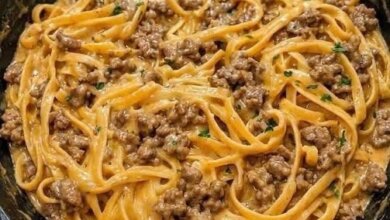The Ultimate Guide to Making Ciabatta Bread

The Ultimate Guide to Making Ciabatta Bread
Ciabatta bread, with its unique rustic appearance and delightful texture, is a beloved staple in Italian cuisine. Known for its airy crumb and crunchy crust, this bread is perfect for dipping in olive oil, making sandwiches, or simply enjoying on its own. In this post, I will show you the simplest and most inexpensive method to prepare Ciabatta Bread. Making a gorgeous loaf of ciabatta at home is easy and requires just a few simple ingredients. Shall we begin baking?
Preparation Time:
- Preparation Time: 30 minutes
- Rising Time: 1-2 hours
- Baking Time: 20 minutes
- Total Time: Approximately 2 hours and 35 minutes
What You Need:
- 250 grams (about 3.5 cups) bread flour
- 5 grams (1 teaspoon) salt
- 2.5 grams (2 teaspoons) active dry yeast
- 300-375 milliliters water (start with 375 ml, adjust as needed)
- 30 grams (about 2 tablespoons) olive oil
Instructions:
Step 1: Activate the Yeast
In a small bowl, dissolve the active dry yeast in 100 milliliters of warm water (from the total of 375-400 ml). Let it sit for about 5 minutes until it starts to foam.
Step 2: Mix the Dough
In a large mixing bowl, combine the bread flour and salt. Add the activated yeast mixture and olive oil. Mix until a sticky dough forms. If the dough feels too dry, gradually add more water until you achieve the desired consistency.
Step 3: First Rise
Cover the bowl with a clean cloth or plastic wrap and place it in a warm area. Allow the dough to rise until it doubles in size, approximately 1 to 2 hours.
Step 4: Shape the Dough
Preheat your oven to 220°C (430°F). Lightly flour a work surface and carefully turn the risen dough onto it, being careful not to deflate it too much. Fold the dough in half a few times to form a rough rectangle.
Step 5: Second Rise
Place the shaped dough on a baking sheet lined with parchment paper or a floured cloth. Cover it again and let it rest for another 30 minutes.
Step 6: Bake
Bake in the preheated oven for 20 minutes, or until the crust is crispy and golden brown. For an extra crispy crust, place a small pan of water in the oven to create steam while baking.
Step 7: Cool and Serve
Remove the ciabatta bread from the oven and let it cool on a wire rack before slicing.
Recommended Serving Sizes:
- Serve with balsamic vinegar and olive oil for dipping.
- Use for paninis or sandwiches.
- Pair with soups or salads for a full meal.
History of Ciabatta Bread
Ciabatta, which means “slipper” in Italian, was invented in the 1980s by baker Franco Farris in the region of Veneto. It was created as a response to the popular French baguette and quickly became a symbol of Italian bread-making. Its distinctive shape and airy texture made it a favorite for sandwiches, and it has since gained international acclaim.
Health Benefits
- Olive Oil: Rich in healthy fats, olive oil is known for its heart-healthy properties.
- Bread Flour: Higher in protein than all-purpose flour, bread flour promotes better gluten formation, resulting in a chewier texture.
Nutritional Information (per serving):
- Calories: Approximately 150
- Protein: 5g
- Carbohydrates: 28g
- Fat: 3g
- Vegan: Yes
Storage Strategies
- Room Temperature: Keep leftovers in an airtight container for up to 2 days.
- Freezer: Wrap tightly in plastic wrap and freeze for up to 1 month. Reheat in the oven before serving.
Why You’ll Love This Recipe
- Budget-Friendly: Simple ingredients and straightforward preparation make this recipe accessible to everyone.
- Delicious Texture: The light crumb and crunchy crust create the perfect ciabatta.
- Versatile: Ideal for dipping, topping, or creating scrumptious sandwiches.
Conclusion
Indulge in this simple and inexpensive ciabatta bread for a tasty and adaptable side dish or snack. Not only is it easy to create, but the end product is exquisite. Ciabatta bread is always a show-stopper, whether it’s accompanied by a meal or eaten alone. Enjoy your baking!
Frequently Asked Questions
- Can I use all-purpose flour instead of bread flour? Yes, you can use all-purpose flour, but bread flour will yield a better texture due to its higher protein content.
- What if the dough is too sticky? Ciabatta dough is usually sticky. If it’s too hard to work with, add a bit more flour, but be careful not to add too much.
- Is it okay to let the dough rise in the fridge? Yes, you can refrigerate the dough as it rises. Just let it come to room temperature before shaping and baking.
- Do I need a special pan to bake ciabatta? No special pan is needed; a standard baking sheet will work fine.
- Can I add flavors to the dough? Absolutely! Consider adding herbs, garlic, or olives for extra flavor.
- How do I know when ciabatta is done baking? It should sound hollow when tapped on the bottom and have a golden-brown crust.
- Can I double the recipe? Yes, you can easily double the ingredients to make more ciabatta.



